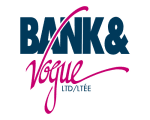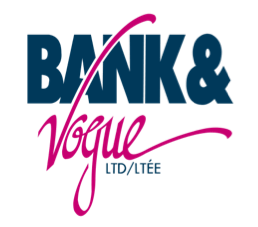Secondhand clothing travels far — from donation bins and sorting centers to overseas ports, street markets, and resale apps. But most of us, even those in the industry, can’t clearly map that journey. That’s a problem.
For a sector that claims sustainability as a core value, transparency and traceability aren’t optional — they’re the proof behind the promise.
The Blind Spots in the Secondhand Trade
Secondhand fashion has evolved into a global business, projected to outpace fast fashion growth by 2030. But it’s not always clear who’s handling the goods, how they’re sorted, or under what labor conditions they move from hand to hand.
In many cases:
- Clothing is donated with good intentions but resold for profit through multiple intermediaries.
- Exported bales reach markets in Africa, Asia, or Latin America with little to no data on their contents or origin.
- Retailers and resellers downstream often don’t know where items came from, how they were sourced, or what materials they contain.
This opacity makes it hard to enforce ethical standards, avoid waste dumping, or improve environmental outcomes. It also erodes trust.


What’s the Difference Between Transparency and Traceability?
These terms often get used interchangeably, but they play different roles:
- Transparency is about sharing honest, verified information with stakeholders — from suppliers to consumers.
- Traceability is about having systems in place to track a product’s movement, materials, and handlers across the supply chain.
One is the what, the other is the how.
Why Is This So Hard in Secondhand?
Unlike primary supply chains, which start with a factory, secondhand supply chains start with the unknown — discarded garments that have already passed through consumer hands. Some key challenges include:
1. Fragmentation
There’s no centralized system connecting charities, graders, exporters, and importers. It’s a patchwork of organizations operating under different standards, or none at all.
2. Lack of Standardization
There are few (if any) industry-wide protocols for labeling, documentation, or quality grading — which makes accurate tracking difficult and greenwashing easy.
3. Limited Technology Adoption
Blockchain, QR tags, and digital product passports exist, but they’re rarely used in bulk secondhand trade. Many exporters still rely on manual sorting and analog systems.
4. Low Regulatory Pressure
While Europe is pushing for digital product passports under the ESPR (EcoDesign for Sustainable Products Regulation), secondhand exporters outside the EU aren’t yet required to meet these standards — though that may soon change.
Who Stands to Benefit
| Stakeholder | Why It Matters |
| Suppliers | Protect reputation, reduce legal/environmental risk |
| Retailers | Offer credible sustainability claims |
| Consumers | Make more informed, ethical purchase decisions |
| Governments | Enforce trade fairness and environmental policies |
| Local Economies | Prevent market flooding, promote fair resale practices |
If traceability becomes the norm, secondhand trade can move from reactive to strategic — from dumping ground to data-driven.
Where Do We Go from Here?
Implementing real transparency in secondhand supply chains doesn’t happen overnight, but here’s what the transition might look like:
-
- Map the chain
Start with what’s known: who collects, who sorts, who exports, and who sells. Then identify the gaps. - Adopt simple tech
Even basic QR codes or digital receipts can build traceability without major investment. - Collaborate across borders
Traceability only works if everyone participates. Industry groups, regulators, and logistics firms must align on standards.
- Map the chain
- Be honest about what’s missing
Transparency doesn’t mean perfection — it means openness. Acknowledge blind spots while actively closing them.
Making Secondhand Supply Chains Transparent — Together
Secondhand isn’t inherently sustainable. It can be — but only if we know the story behind the clothes. That means investing in systems that reveal the full picture: from where garments begin to where they end up, and everything in between.
At Bank & Vogue, we’ve seen firsthand how global secondhand supply chains can serve both people and planet — when done responsibly. As a company that sources, grades, and redistributes large volumes of used clothing around the world, we recognize that transparency isn’t just good practice — it’s a requirement for trust.
That’s why we:
- Emphasize clear, documented sorting practices — avoiding ambiguous terms like “mixed used clothing” and instead labeling inventory with precision (e.g., credential, tropical mix, etc.).
- Work closely with partners to ensure ethical export practices, including accurate manifests and clear communication about product categories and conditions.
- Support innovation in logistics and data-sharing that can enhance traceability in our multi-country distribution network.
The secondhand industry is evolving, and companies like Bank & Vogue have a responsibility to lead with accountability — not just efficiency. That means showing where products come from, how they’ve been handled, and how they support a circular economy that’s both inclusive and transparent.
Traceability isn’t just a logistics challenge. It’s a commitment to doing better — and doing it together.








